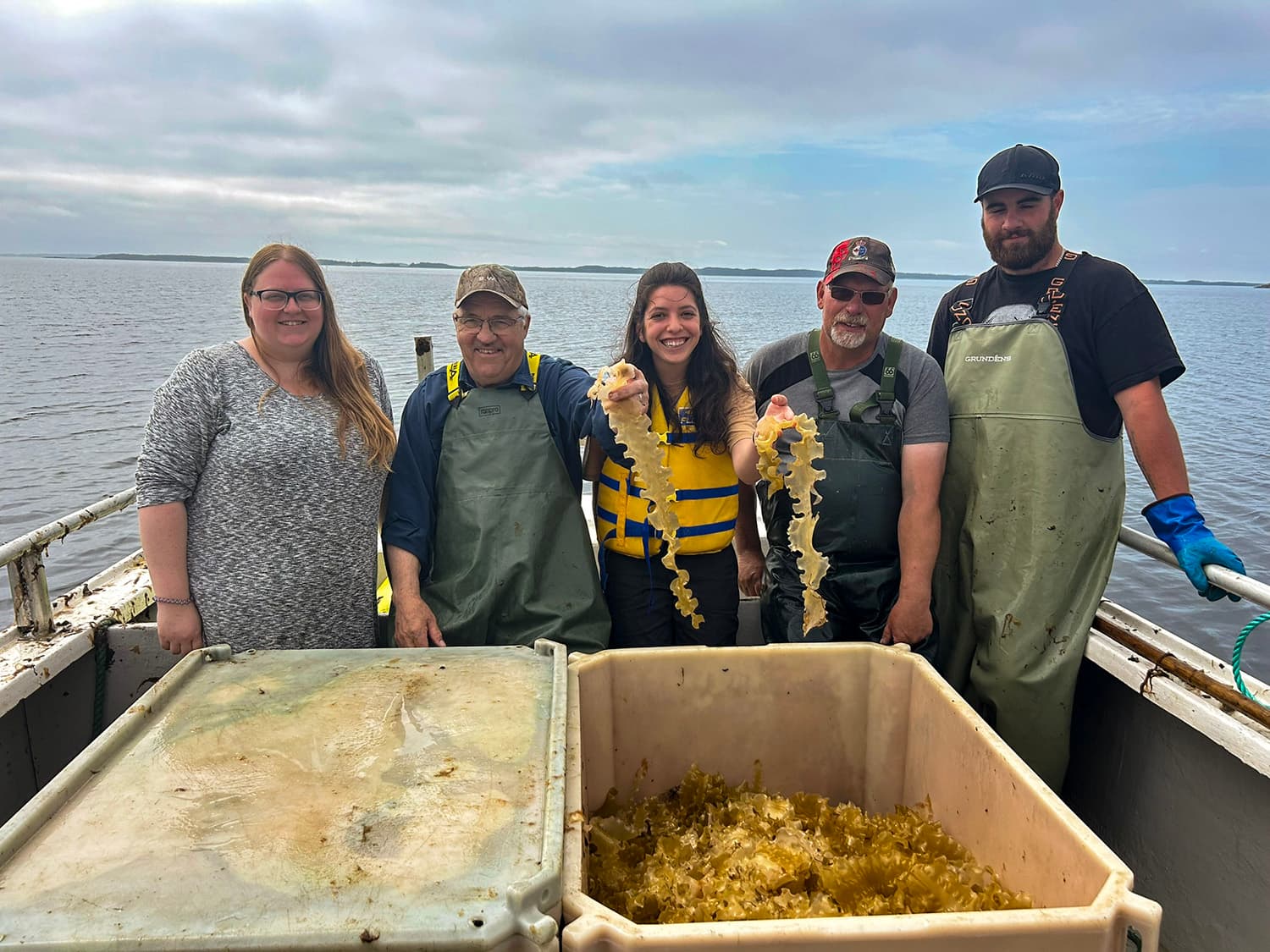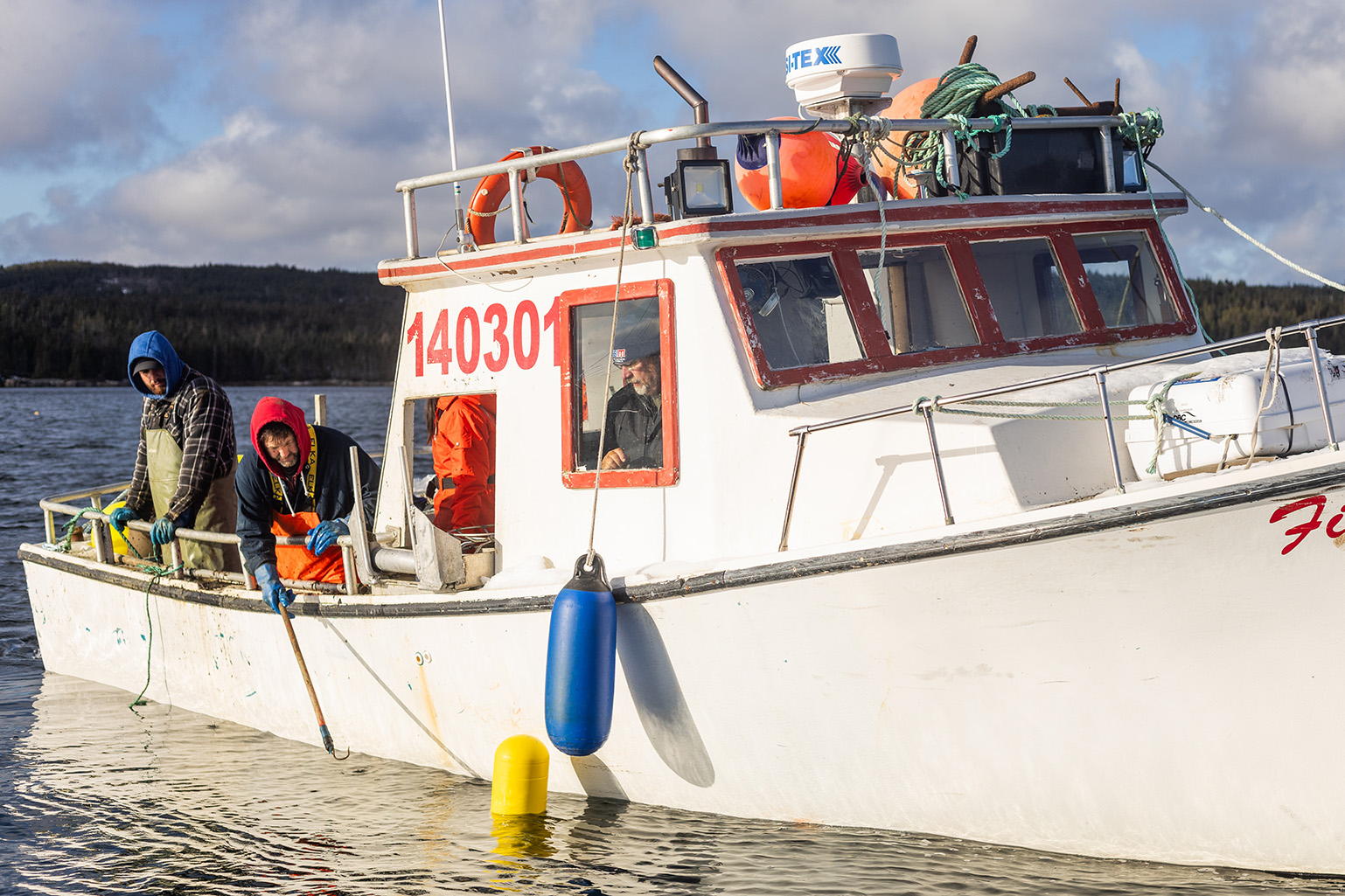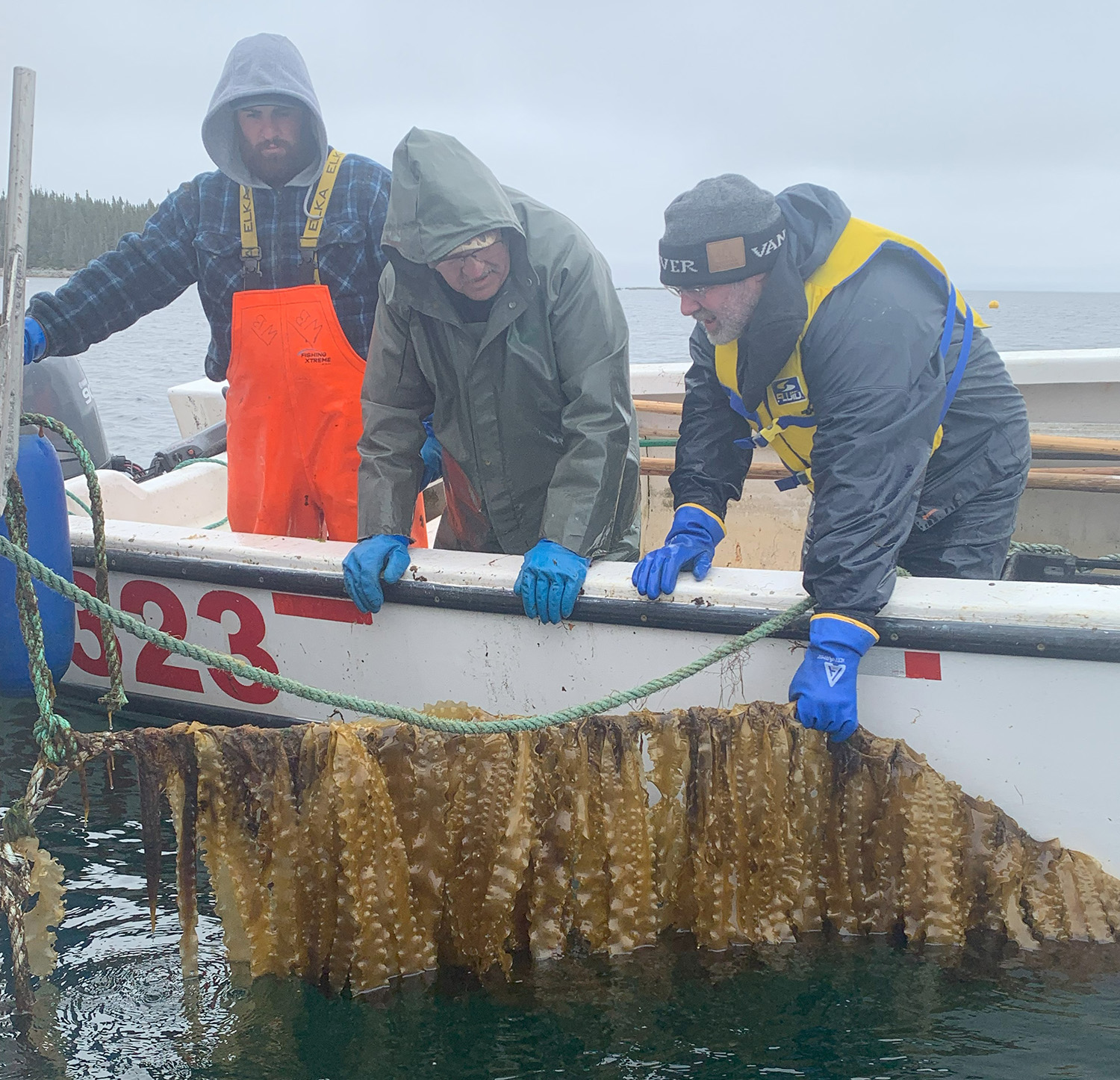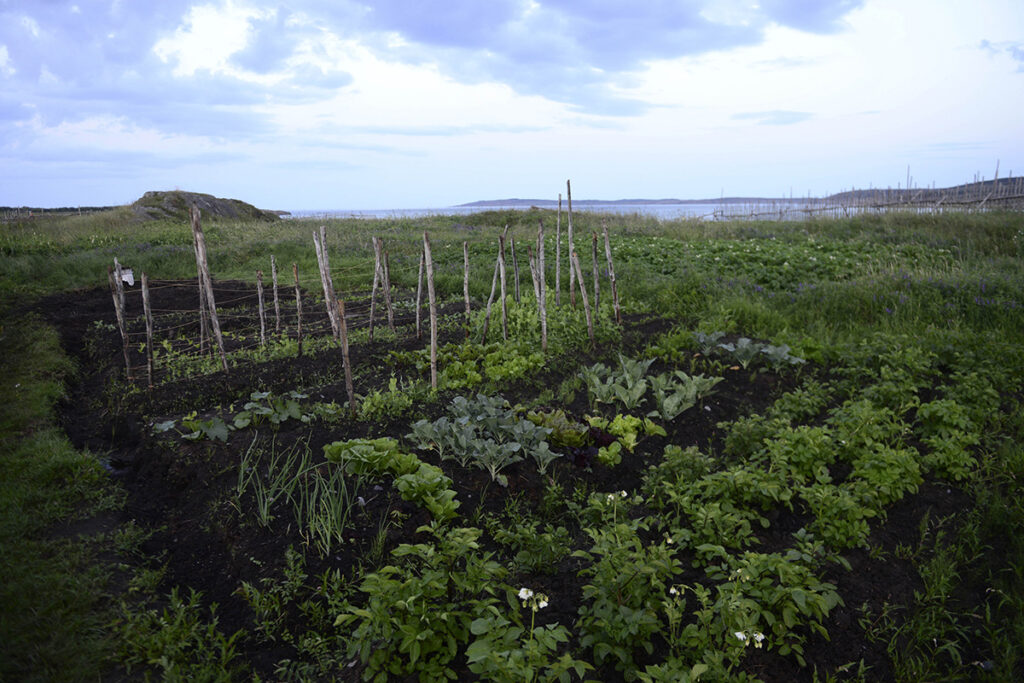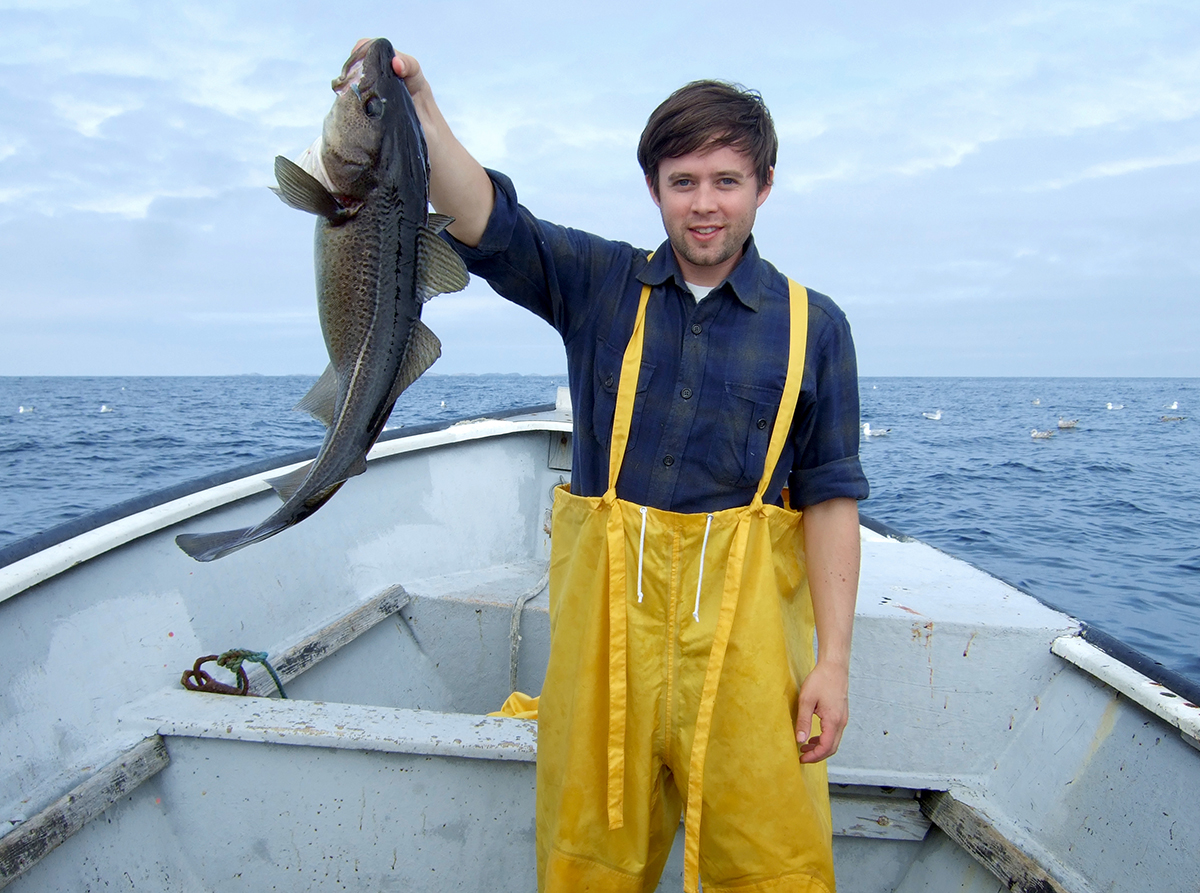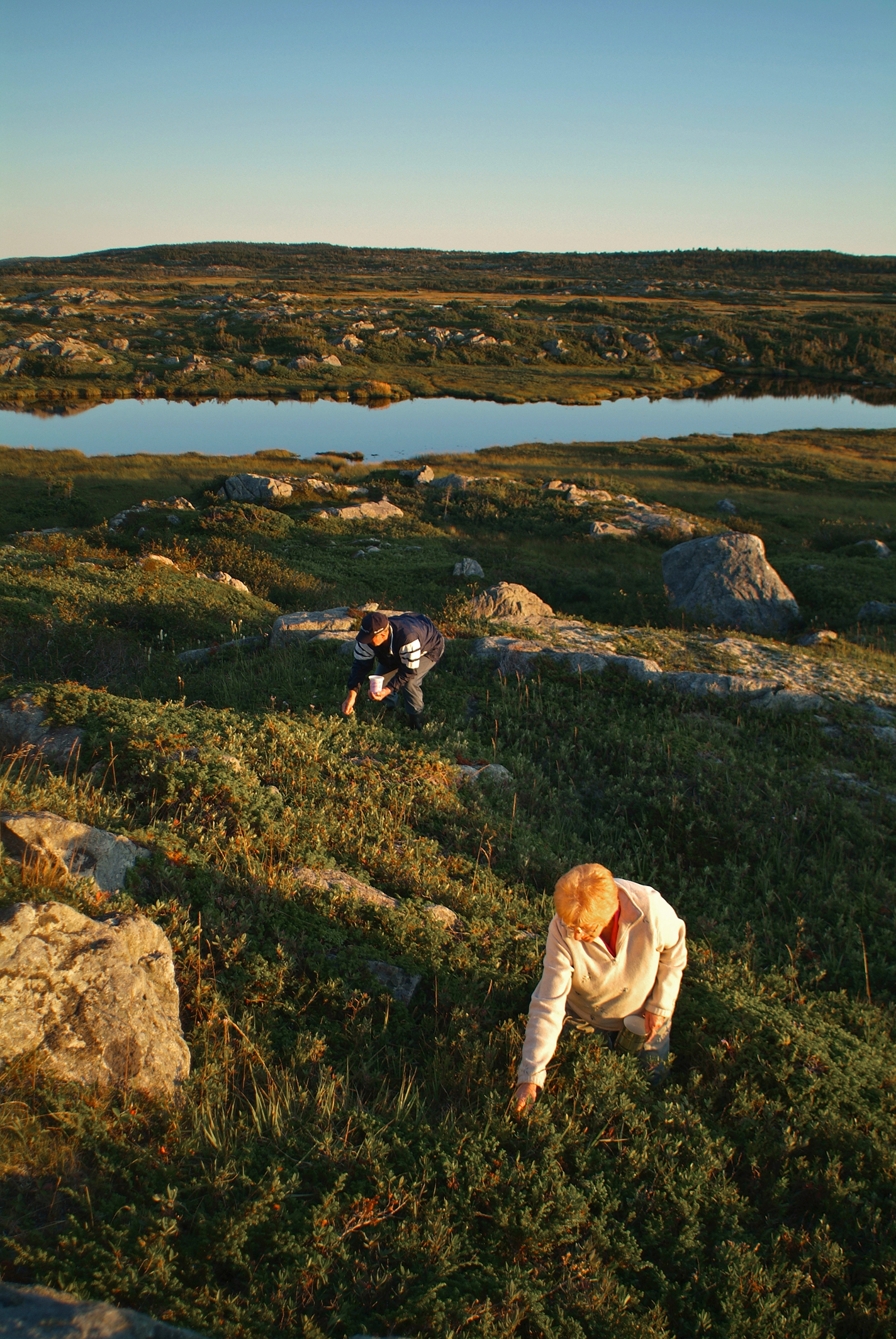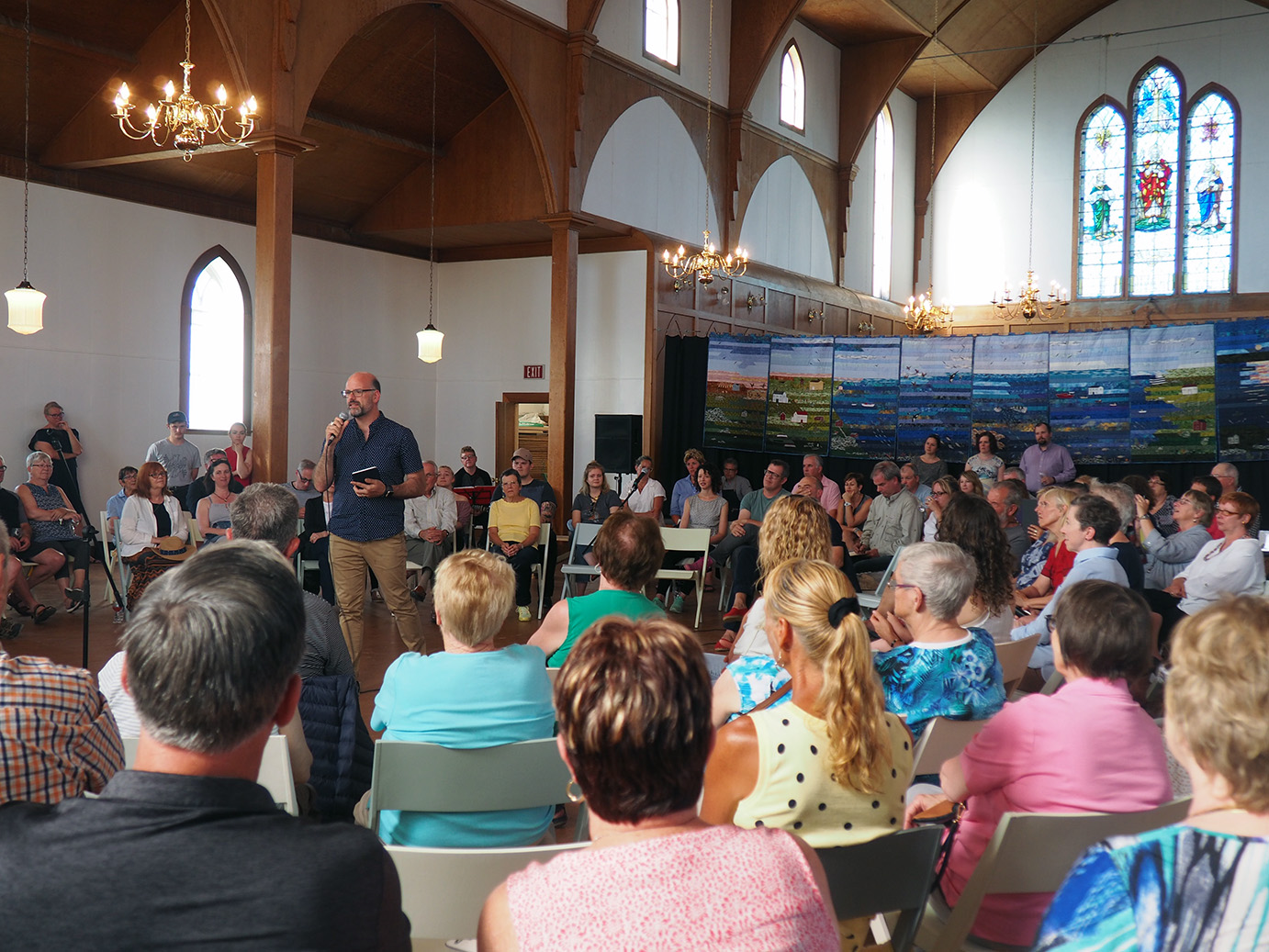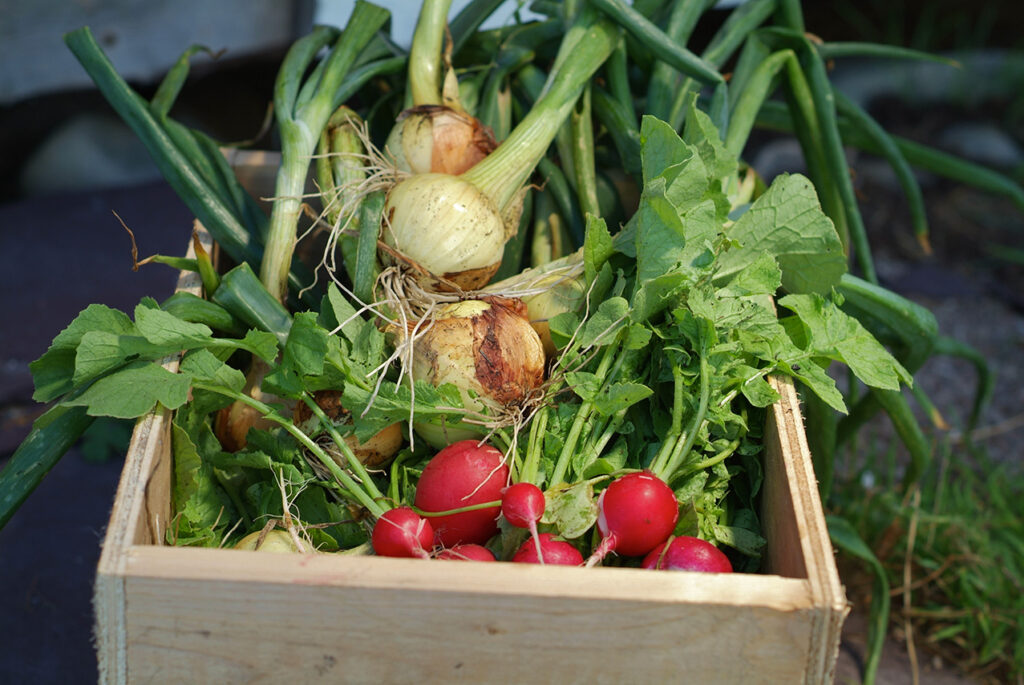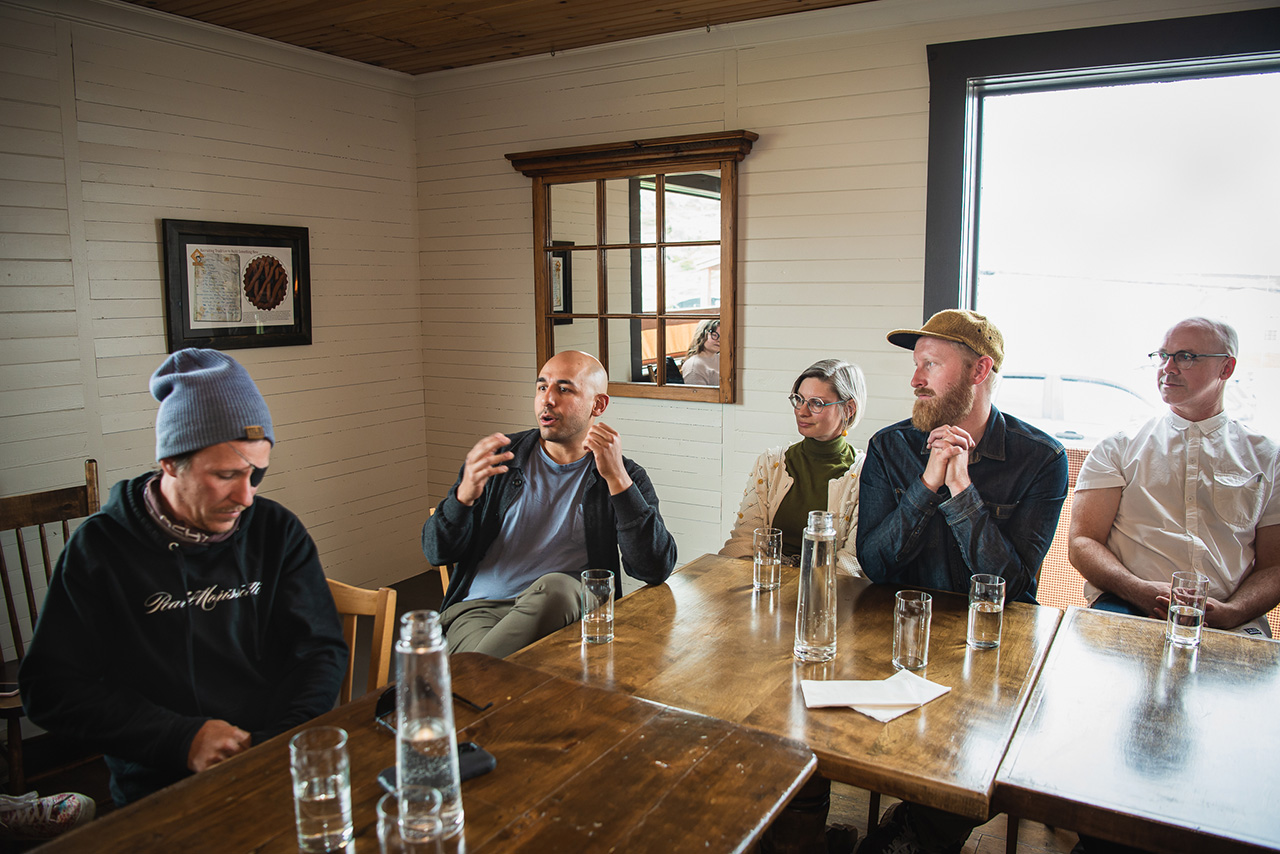
Restaurant Pearl Morissette on Fogo Island
On May 28, 2025, Fogo Island Inn’s Executive Chef Tim Charles led a growers’ circle at The Storehouse, where Restaurant Pearl Morissette’s culinary team, the growers of Farm on Forest, and visitors and residents of Fogo Island gathered for a conversation around what connects us all: good food.
Restaurant Pearl Morissette’s Co-Executive Chef Daniel Hadida kick-started the discussion by introducing the Ontario-based, MICHELIN-starred restaurant’s approach to regenerative farming. “We’re a terminus for regenerative practices that includes growers, fishers, and foragers. We represent the public part of that circle.”
Also present was the restaurant’s resident grower, Shane Harper, who calls himself a “Chef de Farm”. Shane described how his garden serves as another station in the kitchen staffed by “chef-trained gardeners” who focus on cultivating the often-esoteric ingredients featured in the restaurant’s dishes.
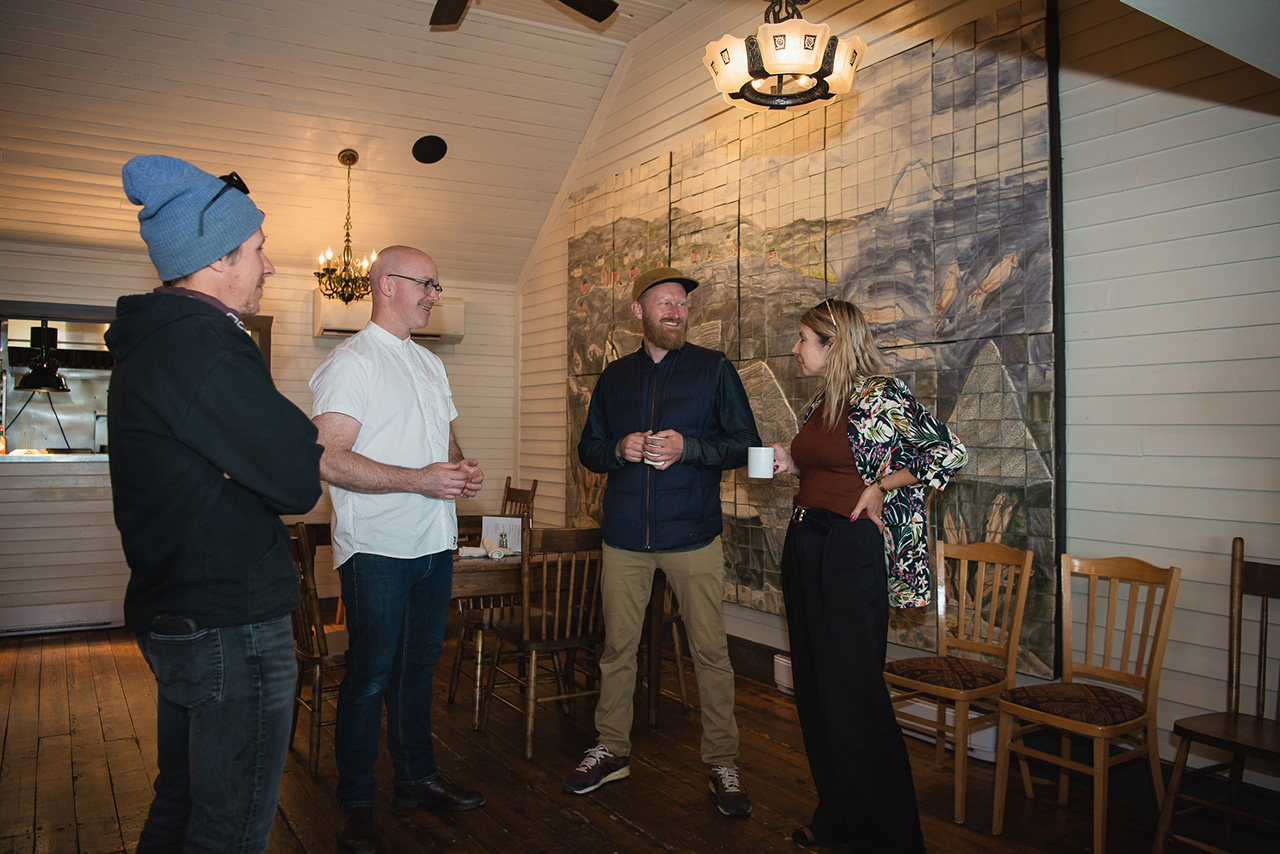
Daniel acknowledged the particularities and privileges of a restaurant surrounded by very nutrient-rich soil — Restaurant Pearl Morissette is located in Ontario’s fertile wine country. In a garden only 300 feet away from the restaurant, the team grows 300 crops. While the conditions appear more arduous in Newfoundland, Farm on Forest’s Tavish Russell and Anja Sajovic drew parallels between their work and Restaurant Pearl Morissette’s.
Tavish and Anja moved to Newfoundland in 2012 (him from Saskatchewan, her from Slovenia). Struck by the island’s food insecurity and poor quality of imported produce, the duo slowly transformed their home in St. John’s into an urban homestead that could provide high-quality ingredients. Thanks to a lot of experimentation, they now grow around 200-250 crops and supply many chefs, including Chef Tim at Fogo Island Inn.
“There is a perception that you can only grow five or six crops here,” said Tavish, “We find inspiration in finding more crops that can grow. The exciting thing about growing in Newfoundland is that there is so much opportunity. There was a strong culture of agriculture, and it died off for a period of time, but it’s starting to come back in these small holdings.”
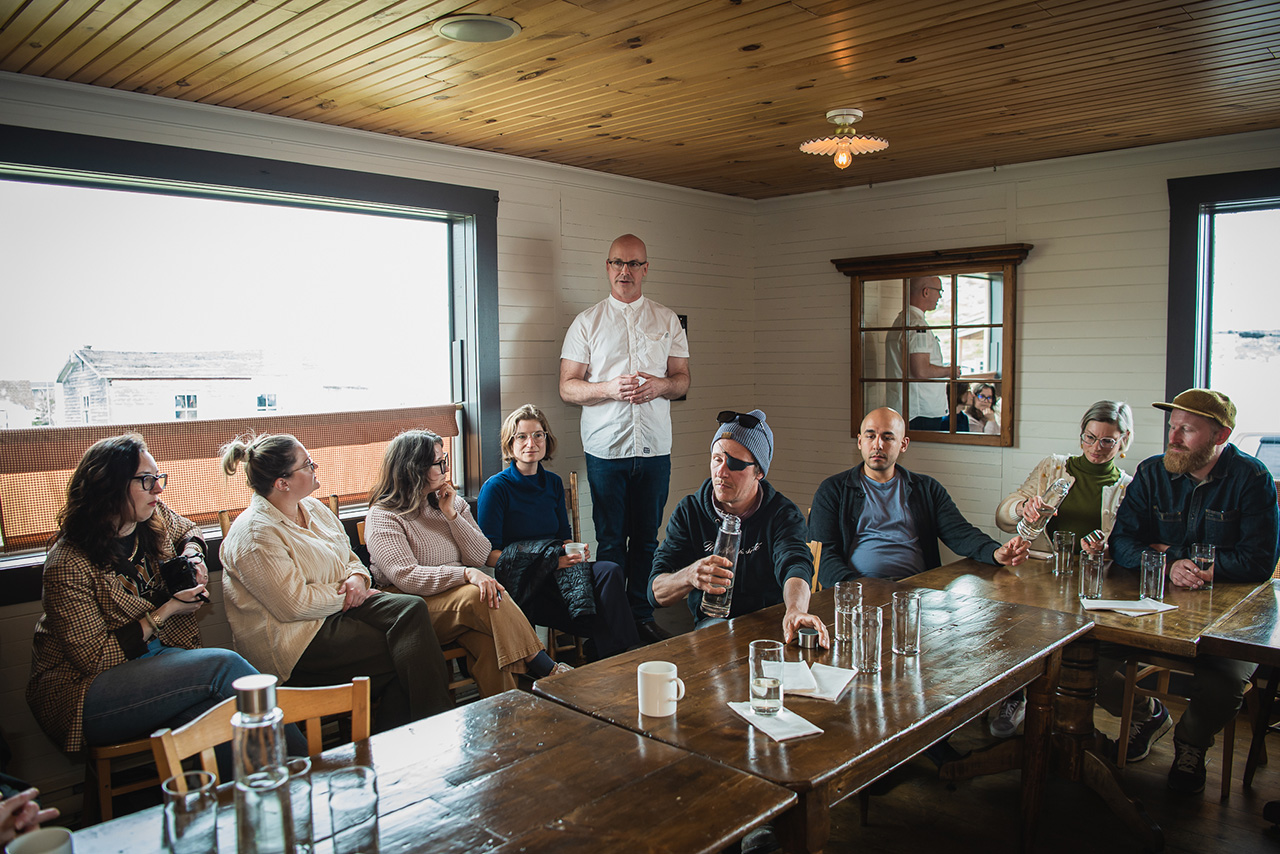
Anja attributes this return to the influence of restaurants. “Restaurants play a huge role in educating communities on new tastes and new ingredients. If one grower starts growing kale, then shows his neighbour, that’s how you get the ball rolling.”
This influence is clear on Fogo Island, where Chef Tim and his team have helped introduce crops like kale and fennel to the gardens of local growers who supply the Inn, including Alfred Coffin. Alf was one of the Fogo Island growers who joined the circle, along with Winston Osmond, Al Dwyer, Allan Foley, Neal Buffett, and Alf’s granddaughter, Keiona Brown.
Fogo Islanders have been growing their own food since long before regenerative farming was adopted by forward-thinking restaurants and chefs. “Ever since I was strong enough to hold a shovel, I’ve been cultivating the land,” said Al. “I’ve grown everything,” added Winston, “Every seed I could get my hands on.” He shared that they might not benefit from acres of land, like in Ontario or elsewhere, but that there are quarter acres and sheltered areas between rocks. It takes creativity to grow here, and a stubborn streak, and, according to Keiona, a dash of competitiveness.
“A lot of older people are stuck in their ways,” she said, “My pop said you can’t grow carrots. There was a bit of competition in showing him that you can. If there’s a will, there’s a way. It’s all about mixing the old with the new.”
Tavish echoed that sentiment. “There is so much to learn from the old ways of growing crops, but now we also have access to information on how people grow things around the world.”
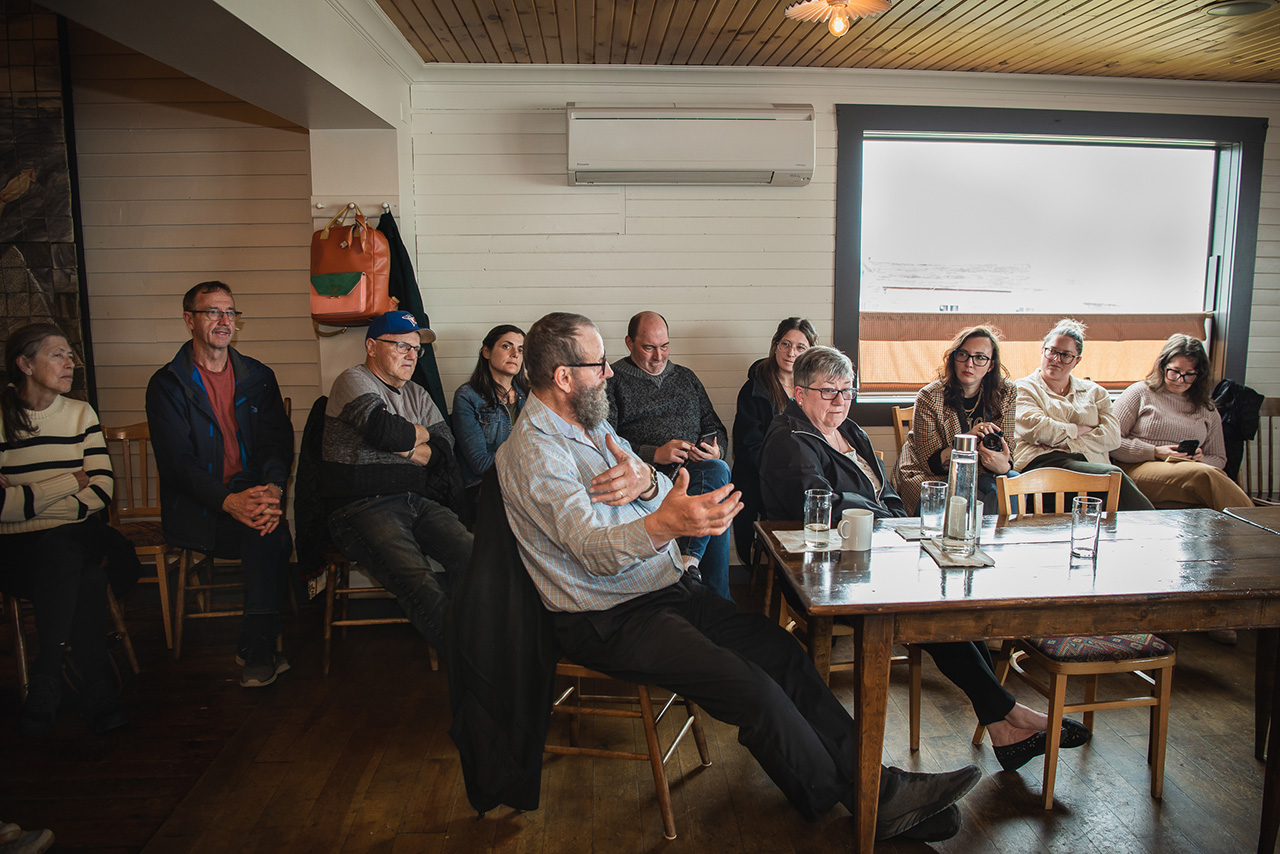
While the growers’ circle celebrated the progressive impact on growers of culinary destinations like Restaurant Pearl Morissette and Fogo Island Inn, it also showcased the lessons still being learned from our traditional foodways. Daniel and Shane listened intently as Fogo Island’s growers discussed spraying their crops with seawater, which infuses produce with natural salinity. Alf and Winston also explained how they’ve not only used sea plants and kelp to fertilize the soil, but capelin and lobster shells.
Conversations around foodways between growers from here and away highlight the necessity of a healthy food system. Nourished by locally grown ingredients, a healthy community contributes to the health of the environment and of the economy. These conversations are also crucial to inspire the next generation of growers, like Keiona Brown, who learned from her grandfather and hopes to continue the traditions of growing on Fogo Island.
